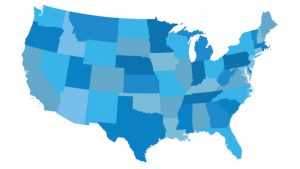Scooter-rental companies in Los Angeles are split over whether to comply with the Los Angeles Department of Transportation’s (LADOT) request for them to provide real-time location data for their scooters.
San Antonio appointed Brian Dillard as its chief innovation officer earlier this month, a move that would make his interim position in the role permanent.
The state of Vermont agreed on Thursday to suspend enforcement of its net neutrality lawsuit until a suit against the Federal Communication Commission (FCC) is resolved. Similarly, telecommunication sector trade groups, who were suing Vermont over the law, agreed to delay their litigation.
Denver is hopping on the app-based voting bandwagon ahead of the 2020 elections.
Legislation introduced on Friday by Texas State Senator Jane Nelson seeks to strengthen the state’s push to the cloud, the role of the Chief Data Officer, and the state’s IT modernization efforts.
A group of 24 technology organizations banded together to urge the Senate to pass S. 3157, the STREAMLINE Small Cell Deployment Act. In a letter released today, the group said the legislation “will modernize wireless infrastructure regulations for next-generation 5G wireless networks” and will unlock “significant consumer and economic benefits.”
The Federal Communications Commission (FCC) today approved by a 3-1, party-line vote a series of steps that its Republican-majority commissioners argue will speed the pace of infrastructure installations necessary for carriers to provide 5G wireless services, but which have drawn strong protest from states and localities in the run-up to today’s vote who object to restrictions on their ability to govern.
The National Association of State Technology Directors (NASTD) is bringing on new leadership. Late last week, the organization announced that John Hoffman, CTO for the Texas Department of Information Resources (DIR), will take over as NASTD president. At DIR, Hoffman is tasked with providing comprehensive strategic planning for the agency. He also has 25 years of experience in the wired and wireless communications fields and has held positions in network operations and integration, field operations, and program management.
California’s state Senate pushed the Golden State one step closer to enacting the Obama-era Federal net neutrality laws that were gutted by the FCC earlier this year. On Friday the state Senate passed the controversial bill, called SB 822, in a vote of 27-12 that was largely along party lines.
California’s state Assembly is attempting to turn back time on net neutrality by voting yesterday to approve a controversial bill that brings the state closer to enacting the Obama-era Federal net neutrality laws that were gutted by the FCC earlier this year.













